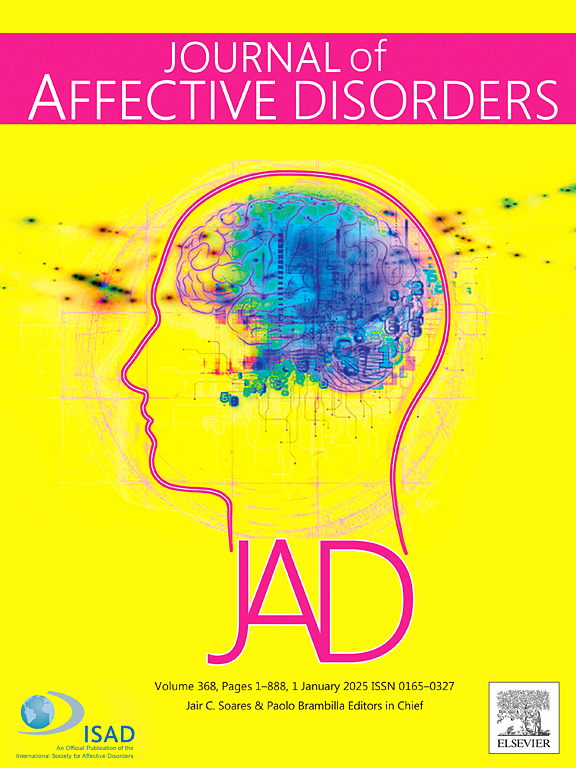The mediating role of childhood maltreatment in the association between being left-behind and adolescent anxiety.
IF 4.9
2区 医学
Q1 CLINICAL NEUROLOGY
引用次数: 0
Abstract
Backgrounds
Left-behind and separated from parents are common among Chinese adolescents and many developing countries, which may cause maltreatment and mental disorders, especially anxiety. Nevertheless, the comprehensive study in the prevalence of childhood maltreatment and its role in anxiety among left-behind adolescents is still insufficient.
Methods
A nationally representative middle school sample of 32,620 adolescents participated the pen-paper survey regarding demographics, left-behind status and the source of abuse. The Generalized Anxiety Disorder-7 and Chinese version of the Childhood Trauma Questionnaire were used to assess anxiety symptoms and maltreatment experience. The analyses in prevalence, risk factors and mediating effects were preformed in SPSS 27.
Results
30,174 valid questionnaires were collected, of which 2748 were left-behind adolescents. 46.4 % of left-behind and 35.6 % of non-left-behind adolescents reported anxiety, and left-behind increased risk of anxiety (OR = 1.180, 95%CI: 1.180–1.286, p < 0.001). In left-behind adolescents, female sex, older age, and maltreatment experience were risk factors of anxiety. Additionally, left-behind adolescents were more likely to suffer serious abuse and all abuse subtypes. The maltreatment almost completely mediated the association between left-behind and anxiety (0.857, 95%bootstrap CI = 0.743, 0.976), of which emotional abuse played the largest role (0.648, CI = 0.547, 0.751), followed by physical neglect, emotional neglect, and sexual abuse.
Conclusion
This study revealed the prevalence of anxiety and maltreatment in Chinese left-behind adolescents, and suggested that the maltreatment might significantly mediate the anxiety of left-behind adolescents. This may shed a light on other developing countries where the phenomenon of left-behind adolescents exists.
求助全文
约1分钟内获得全文
求助全文
来源期刊

Journal of affective disorders
医学-精神病学
CiteScore
10.90
自引率
6.10%
发文量
1319
审稿时长
9.3 weeks
期刊介绍:
The Journal of Affective Disorders publishes papers concerned with affective disorders in the widest sense: depression, mania, mood spectrum, emotions and personality, anxiety and stress. It is interdisciplinary and aims to bring together different approaches for a diverse readership. Top quality papers will be accepted dealing with any aspect of affective disorders, including neuroimaging, cognitive neurosciences, genetics, molecular biology, experimental and clinical neurosciences, pharmacology, neuroimmunoendocrinology, intervention and treatment trials.
 求助内容:
求助内容: 应助结果提醒方式:
应助结果提醒方式:


